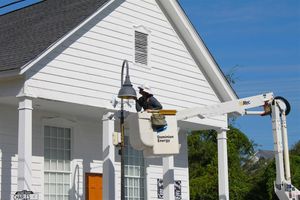Coya Therapeutics, Inc. (Nasdaq: COYA) (“Coya” or the “Company”), a clinical-stage biotechnology company developing biologics intended to enhance Treg function, announces that Howard Berman, Ph.D., Chief Executive Officer and Chairman of Coya Therapeutics, Arun Swaminathan, Ph.D., Chief Business Officer, and Fred Grossman DO, President and Chief Medical Officer, have been invited to participate in Chardan Capital Market’s (Chardan’s) upcoming biotechnology Leadership Call Series on Tuesday, January 30, 2024 at 10:30am ET.
Chardan’s Leadership Call Series features management teams from leading disruptive biotechnology companies discussing their business and key industry trends in a fireside chat-style format. This discussion will be moderated by Chardan Senior Biotechnology Analyst, Keay Nakae, CFA.
Howard H. Berman, Ph.D., Coya CEO stated: “We appreciate the opportunity to participate in this event to discuss our pioneering drug development efforts in Regulatory T Cell (Treg)-enhancing therapies in neurodegenerative diseases. We will discuss how combination immunotherapies, such as COYA 302, may overcome the complex inflammatory environment that is a hallmark in these conditions and potentially have disease modifying outcomes.”
Interested investors may request attendance to the live virtual event by emailing Chardan at corpaccess@chardan.com. A replay of the session will be available on Coya’s website following the call.
About COYA 302
COYA 302 is an investigational and proprietary biologic combination therapy with a dual immunomodulatory mechanism of action intended to enhance the anti-inflammatory function of regulatory T cells (Tregs) and suppress the inflammation produced by activated monocytes and macrophages. COYA 302 is comprised of proprietary low dose interleukin-2 (LD IL-2) and CTLA-4 Ig and is being developed for subcutaneous administration for the treatment of patients with ALS. These mechanisms may have additive or synergistic effects.
In February of 2023, Coya announced results from a proof-of-concept, open-label clinical study evaluating LD IL-2 and CTLA-4 Ig in a small cohort of patients with ALS conducted at the Houston Methodist Research Institute (Houston, Texas) by Stanley Appel, M.D., Jason Thonhoff, M.D., Ph.D., and David Beers, Ph.D. This study was the first-of-its-kind evaluating this dual-mechanism immunotherapy for the treatment of ALS. Patients in the study received investigational treatment for 48 consecutive weeks and were evaluated for safety and tolerability, Treg function, serum biomarkers of oxidative stress and inflammation, and clinical functioning as measured by the ALSFRS-R scale.
During the 48-week treatment period, the therapy was well tolerated. The most common adverse event was mild injection-site reactions. No patient discontinued the study, and no deaths or other serious adverse events were reported.
Patients' disease progression was measured using the ALSFRS-R scale, a validated rating tool for monitoring the progression of disability in patients with ALS. The mean (±SD) ALSFRS-R scores at week 24 (33.75 ±3.3) and week 48 (32 ±7.8) after initiation of treatment were not statistically different compared to the ALSFRS-R score at baseline (33.5 ±5.9), suggesting significant amelioration in the progression of the disease over the 48-week treatment period.
Treg suppressive function, expressed as percentage of inhibition of proinflammatory T cell proliferation, showed a statistically significant increase over the course of the treatment period and was significantly reduced at the end of the 8-week washout post-treatment period. Treg suppressive function at 24 weeks (79.9 ±9.6) and 48 weeks (89.5 ±4.1) were significantly higher compared to baseline (62.1 ±8.1) (p<0.01), suggesting enhanced and durable Treg suppressive function over the course of treatment. In contrast, Treg suppressive function (mean ±SD) was significantly decreased at the end of the 8-week washout period compared to end-of-treatment at week 48 (70.3 ±8.1 vs. 89.5 ±4.1, p <0.05).
The study also evaluated serum biomarkers of inflammation, oxidative stress, and lipid peroxides. The available data up to 16 weeks after initiation of treatment suggest a decrease in these biomarker levels, which is consistent with the observed enhancement of Treg function. The evaluation of the full biomarker data is ongoing.
Coya recently announced the pipeline expansion of COYA 302 to include Frontotemporal Dementia (FD) and Parkinson’s Disease (PD) in addition to ALS.
COYA 302 is an investigational product not yet approved by the FDA or any other regulatory agency.
About Amyotrophic Lateral Sclerosis
Amyotrophic lateral sclerosis (ALS), also known as Lou Gehrig's Disease, is a rare neurological disease that affects motor neurons, the nerve cells in the brain and spinal cord that control voluntary muscle movement. About 20,000 people live with ALS in the United States and approximately 5,000 new cases are diagnosed every year. The disease is progressive, meaning the symptoms get worse over time. The functional status of ALS patients declines about 1 point per month on average, as measured by the Revised ALS Function Rating Scale1, or ALSFRS-R, a validated tool to monitor the progression of the disease.
ALS has no cure, and the currently approved drug treatments provide limited benefit to patients. ALS is a type of motor neuron disease. As motor neurons degenerate and die, they stop sending messages to the muscles, which causes the muscles to weaken, start to twitch (fasciculations), and waste away (atrophy). Eventually, the brain loses its ability to initiate and control voluntary movements. Most people with ALS die from respiratory failure, usually within three to five years from when the symptoms first appear.2
About Frontotemporal Dementia
Frontotemporal dementia (FTD) is the result of damage to neurons in the frontal and temporal lobes of the brain. Many possible symptoms can result, including unusual behaviors, emotional problems, trouble communicating, difficulty with work, or difficulty with walking. FTD is rare and tends to occur at a younger age than other forms of dementia. About 60% of people with FTD are 45 to 64 years old. FTD is progressive, meaning symptoms get worse over time. In the early stages, people may have just one symptom. As the disease progresses, other symptoms appear as more parts of the brain are affected. It is difficult to predict how long someone with FTD will live. Some people live more than 10 years after diagnosis, while others live less than two years after they are diagnosed. There is no cure for FTD, and no treatments slow or stop the progression of the disease.3
About Parkinson’s Disease
Parkinson’s disease (PD) is a progressive brain disorder that causes unintended or uncontrollable movements, such as shaking, stiffness, and difficulty with balance and coordination. The most prominent manifestations of PD occur when nerve cells in the basal ganglia, an area of the brain that controls movement, become impaired or die. As the disease progresses, people may have difficulty walking and talking. They may also have mental and behavioral changes, sleep problems, depression, memory difficulties, and fatigue. Most people with PD first develop the disease after age 60, but about 10% experience onset before the age of 50. There is no cure for PD and currently available treatments are intended to relieve some symptoms.4
References
- Atassi N, et al. The PRO-ACT database: design, initial analyses, and predictive features. Neurology, 2014;83:1719–1725. doi: 10.1212/WNL.0000000000000951.
- National Institutes of Health (NIH) Website (https://www.ninds.nih.gov), accessed on January 8, 2024.
- National Institutes of Health (NIH) Website (https://www.nia.nih.gov), accessed on January 8, 2024.
- National Institutes of Health (NIH) Website (https://www.nia.nih.gov), accessed on January 8, 2024.
About Coya Therapeutics, Inc.
Headquartered in Houston, TX, Coya Therapeutics, Inc. (Nasdaq: COYA) is a clinical-stage biotechnology company developing proprietary treatments focused on the biology and potential therapeutic advantages of regulatory T cells (“Tregs”) to target systemic inflammation and neuroinflammation. Dysfunctional Tregs underlie numerous conditions, including neurodegenerative, metabolic, and autoimmune diseases, and this cellular dysfunction may lead to sustained inflammation and oxidative stress resulting in lack of homeostasis of the immune system.
Coya’s investigational product candidate pipeline leverages multiple therapeutic modalities aimed at restoring the anti-inflammatory and immunomodulatory functions of Tregs. Coya’s therapeutic platforms include Treg-enhancing biologics, Treg-derived exosomes, and autologous Treg cell therapy. Coya’s 300 Series product candidates, COYA 301 and COYA 302, are biologic therapies intended to enhance Treg function and expand Treg numbers. COYA 301 is a cytokine biologic for subcutaneous administration intended to enhance Treg function and expand Treg numbers in vivo. COYA 302 is a biologic combination for subcutaneous and/or intravenous administration intended to enhance Treg function while depleting T effector function and activated macrophages. These two mechanisms may be additive or synergistic in suppressing inflammation. For more information about Coya, please visit www.coyatherapeutics.com
Forward-Looking Statements
This press release contains “forward-looking” statements that are based on our management’s beliefs and assumptions and on information currently available to management. Forward-looking statements include all statements other than statements of historical fact contained in this presentation, including information concerning our current and future financial performance, business plans and objectives, current and future clinical and preclinical development activities, timing and success of our ongoing and planned clinical trials and related data, the timing of announcements, updates and results of our clinical trials and related data, our ability to obtain and maintain regulatory approval, the potential therapeutic benefits and economic value of our product candidates, competitive position, industry environment and potential market opportunities. The words “believe,” “may,” “will,” “estimate,” “continue,” “anticipate,” “intend,” “expect,” and similar expressions are intended to identify forward-looking statements.
Forward-looking statements are subject to known and unknown risks, uncertainties, assumptions and other factors including, but not limited to, those related to risks associated with the impact of COVID-19; the success, cost and timing of our product candidate development activities and ongoing and planned clinical trials; our plans to develop and commercialize targeted therapeutics; the progress of patient enrollment and dosing in our preclinical or clinical trials; the ability of our product candidates to achieve applicable endpoints in the clinical trials; the safety profile of our product candidates; the potential for data from our clinical trials to support a marketing application, as well as the timing of these events; our ability to obtain funding for our operations; development and commercialization of our product candidates; the timing of and our ability to obtain and maintain regulatory approvals; the rate and degree of market acceptance and clinical utility of our product candidates; the size and growth potential of the markets for our product candidates, and our ability to serve those markets; our commercialization, marketing and manufacturing capabilities and strategy; future agreements with third parties in connection with the commercialization of our product candidates; our expectations regarding our ability to obtain and maintain intellectual property protection; our dependence on third party manufacturers; the success of competing therapies or products that are or may become available; our ability to attract and retain key scientific or management personnel; our ability to identify additional product candidates with significant commercial potential consistent with our commercial objectives; ; and our estimates regarding expenses, future revenue, capital requirements and needs for additional financing.
We have based these forward-looking statements largely on our current expectations and projections about future events and trends that we believe may affect our financial condition, results of operations, business strategy, short-term and long-term business operations and objectives, and financial needs. Moreover, we operate in a very competitive and rapidly changing environment, and new risks may emerge from time to time. It is not possible for our management to predict all risks, nor can we assess the impact of all factors on our business or the extent to which any factor, or combination of factors, may cause actual results to differ materially from those contained in any forward-looking statements we may make. In light of these risks, uncertainties and assumptions, the forward-looking events and circumstances discussed herein may not occur and actual results could differ materially and adversely from those anticipated or implied in the forward-looking statements. Although our management believes that the expectations reflected in our forward-looking statements are reasonable, we cannot guarantee that the future results, levels of activity, performance or events and circumstances described in the forward-looking statements will be achieved or will occur. We undertake no obligation to publicly update any forward-looking statements, whether written or oral, that may be made from time to time, whether as a result of new information, future developments or otherwise.
View source version on businesswire.com: https://www.businesswire.com/news/home/20240118243335/en/
Contacts
Investor Contact
David Snyder
david@coyatherapeutics.com
CORE IR
Bret Shapiro
brets@coreir.com
561-479-8566
Media Contact
Jessica Starman
jessica@elev8newmedia.com
818-621-7216





